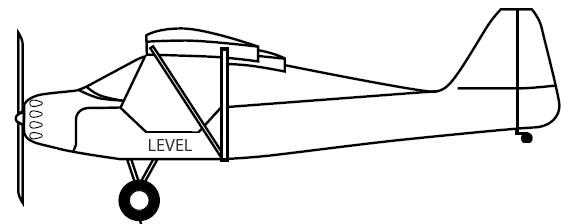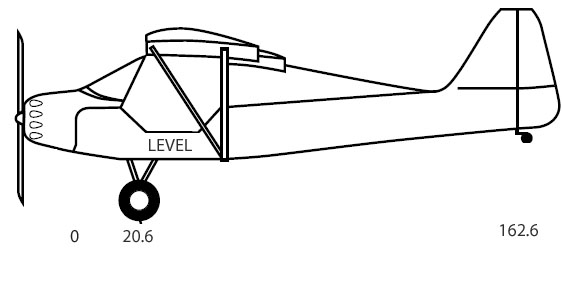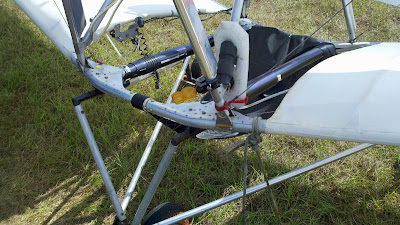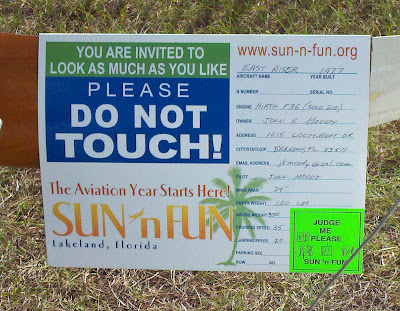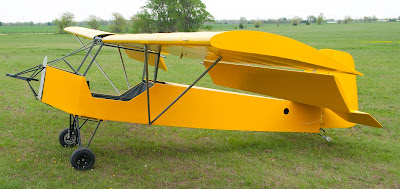Editor's Note:
I recently returned from a heavy work schedule and from a great Alaskan vacation!
My last post was an excellent article by Earl Downs on the Belite. It provided a great view of the flying qualities of the Belite.
Many people want to know how to transition to flying a single place ultralight airplane, such as our Belite. This particular post will help you gain that knowledge! Although originally written years ago by another author, I have been graciously granted (anonymous) permission to update it to reflect our Belite ultralight aircraft.
Enjoy the reading.... Enjoy the learning... and enjoy the flying!
Published in three parts
Flying the Belite Ultralight Aircraft - Part 1
by James Wiebe, CEO
Belite Aircraft
General Flight Characteristics
The Belite 254 / Superlite / Trike (hereafter, collectively referred to simply as: 'Belite') is first and foremost, a very real airplane, requiring competent flying skills to takeoff, fly and land. In return, it offers a genuine flight experience, with none of the compromises associated with traditional ultralight aircraft and FAR Part 103 legal designs.
Most of the takeoff and landing comments below refer to the taildragger versions -- the Trike version is even easier to land.
The Belite utilizes a standard three axis flight control system consisting of flaperons (ailerons that also act as adjustable flaps, through the use of an ingenious flap / aileron mixer). It also has a conventional elevator and rudder.
The ailerons and elevator are operated by a conventional control stick, while the rudder are moved through the use of independent rudder peddles. Any pilot familiar with aircraft such as a standard Kitfox, Piper Cub (or common derivatives, such as the CubCrafter), or Aeronca Champ will find the cockpit to be a familiar and friendly environment. The flap function is provided by a four position flap lever that intermixes with the aileron control to 'droop' the flaperons.
Additionally, independent mechanical heel brakes are used to both stop and steer the Belite during ground operations. An optional electric elevator inflight trim system provides for completely neutral flight characteristics during cruise, allowing hands off operation for brief periods of time, such as when taking photographs. Back pressure is used on the stick in order to maintain a normal approach speed. All flight controls are lite and very responsive at all speeds.
(For an independent extensive flight review of the Belite, see the excellent article by Scott Severen, published elsewhere on this blog.)
The tail-wheel configuration of the Belite does not present any unusual challenges during takeoff or landing. The large rudder is very effective and little, if any, differential braking is needed to control the landing rollout. In fact, customers preferring to fly their aircraft without brakes will be comfortable, especially when operating off of grass airstrips with light crosswinds.
Absolutely no differential braking is needed on the takeoff roll due to excellent rudder effectiveness. Basic tail-wheel training in a Kitfox, Cub, Champ, Cessna 120/140, Citabria, or other tail-wheel light aircraft should serve to prepare you to handle the Belite. Differential braking works well to steer the Belite during tax and forward visibility on the ground is unrestricted. 'S' turns are generally unnecessary.
As with the operation of all airplanes, the pilot should be current and qualified. You should not attempt to fly the Belite unless you would feel absolutely comfortable soloing the airplane you have been flying for tail wheel proficiency. The EAA can provide help with transition instruction in a taildragger and with 'first flight' issues. You are encouraged to secure as many resources as possible to help with your transition.
Ground Handling
The Belite utilizes differential heel braking to maneuver the airplane. The heel brakes will cause the airplane to turn in the direction in which force is applied; left braking makes the plane turn left; right braking makes the plane turn right; braking both sides causes the plane to slow down.
Do not try to turn the airplane from a dead stop by locking a wheel and then adding power. The airplane will turn much more easily if the plane starts moving slowly first, then applying braking to the appropriate side. Once a turn is started, the momentum of the turn will tend to keep the turn going. Once you are taxiing, the rudder alone may be all that is needed to steer your Belite. As with all tail wheel airplanes, it is a good idea to center the tail wheel when you come to a stop. This practice will make it much easier to control when you start taxiing again, or when you start your takeoff roll.
There may be circumstances when taxiing in tall grass or on a soft surface that make it difficult to swing the tail when differential braking is applied. There is an old trick from the day of tailskids that may help out. If the tail wheel is really bogging down, add sufficient power to get the plane moving, then push the control stick forward (keeping the power up) and then apply brake and full rudder in the direction you wish to turn. The forward stick will lighten the load on the tail wheel and the rudder will help push the tail around. Be very careful when trying this, as you could blow a lot of dirt around or upset airplanes behind you. Always be courteous to other airplanes and pilots.
A note of caution: one must be very cautious when taxiing in windy conditions. The light weight and low wing loading of the Belite makes it susceptible to being upset by ground winds. Unless you have exception skills, fully understand the risks, and (perhaps) have wing walkers available, do not taxi your Belite in winds exceeding 12 knots (15 mph) or greater. Rapid ground turns should be avoided under all conditions.
Like any airplane, appropriate taxiing technique is important. The flight controls can be quite effective in helping the Belite ultralight aircraft safely taxi. When taxiing into a headwind, hold the control stick full back to help keep the tail on the ground. A tailwind requires to the stick full forward; this will help keep the tail on the ground. With the quartering headwind, move the control stick into the wind, as if trying to turn into the wind. With a quartering tailwind, move and hold the control stick away from the wind, as if trying to turn away from the wind. If the wind is straight over the nose or tail, keep the ailerons centered. These positions will help keep the wing from being lifted by the wind.
You should be completely comfortable with taxiing, braking, and turning before proceeding to takeoff. I say again: have total comfort with ground handling and taxi operations before proceeding to takeoff.
Take Off
Your first takeoff should be made from a runway that is both wide enough and long enough to accommodate errors. It should also be made from a runway without pressure from other aircraft operations. Do not make your first takeoff with space restrictions that require maximum performance. Perform a thorough preflight; make sure that the engine is warmed up and is showing correct temperatures, RPMs, mag checks, etc.
Align your Belite on the centerline of the runway and make sure the tail wheel is centered. With the brakes locked and control stick held fully back, smoothly increase the power to approximately 75% of full power. Release the brakes and continue to smoothly increase power to full throttle. You will immediately see that the rudder is fully effective; you can control direction by use of the rudder pedals. You won't need to use the brakes. Keep the ailerons (flaperons) centered. Directional control on the ground is controlled by your feet, not your hands.
Shortly after applying full power, you can push forward on the stick, and the tail will raise off the ground into a traditional level attitude. Keep the nose straight (using the rudder pedals), and as the speed passes 40 to 45mph, you'll be able to pull the stick back a little, and the airplane will fly. Depending on engine power, the total time from brake release to liftoff is about 5 or 6 seconds, depending on field elevation, winds, temperature, aircraft weight, and engine selection. In a strong breeze, a takeoff roll of well less than 100 feet is an easy matter.
Immediately at and after liftoff, the flaperons become very important. You'll use the control stick to level the wings. Concentrate on level wings and a slight climb attitude. I enjoy climbing to the top of ground effect (about 30 feet off the ground), then briefly leveling off and continuing climbout at a stabilized Vy speed, which is about 50mph.
As you gain more experience with the thoroughly enjoyable takeoff characteristics of the Belite, you will find that it also takes off very well in a three point attitude. The basic procedure is the same, but instead of pushing the control stick forward, you simply place the stick in a centered, neutral position. The Belite will fly off the ground when it is ready, in a tail low attitude. Make appropriate minor pitch adjustments as required to establish a climb.
Don't climb out too rapidly -- never climb out below Vx (about 40mph); if your density altitude is high, or your weight is heavy, your climbout speed should be at Vy or higher. Remember, you are flying the airplane.
Continue to Part 2 by
clicking here
